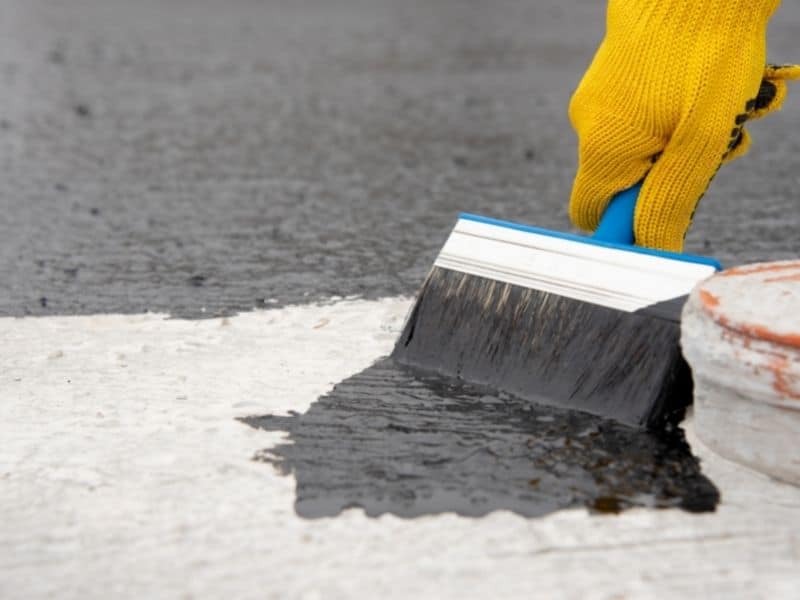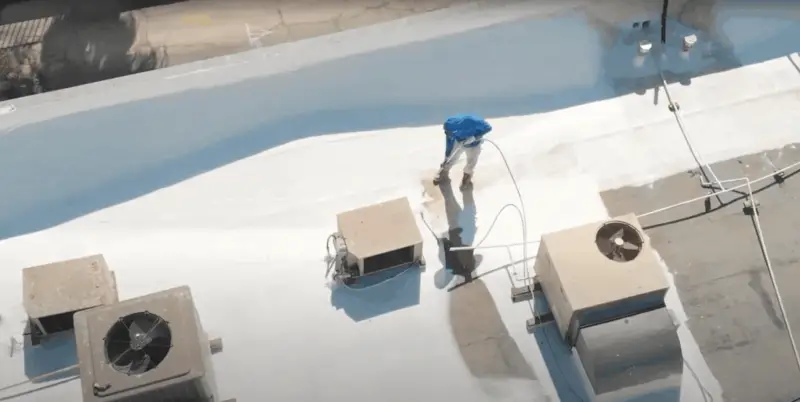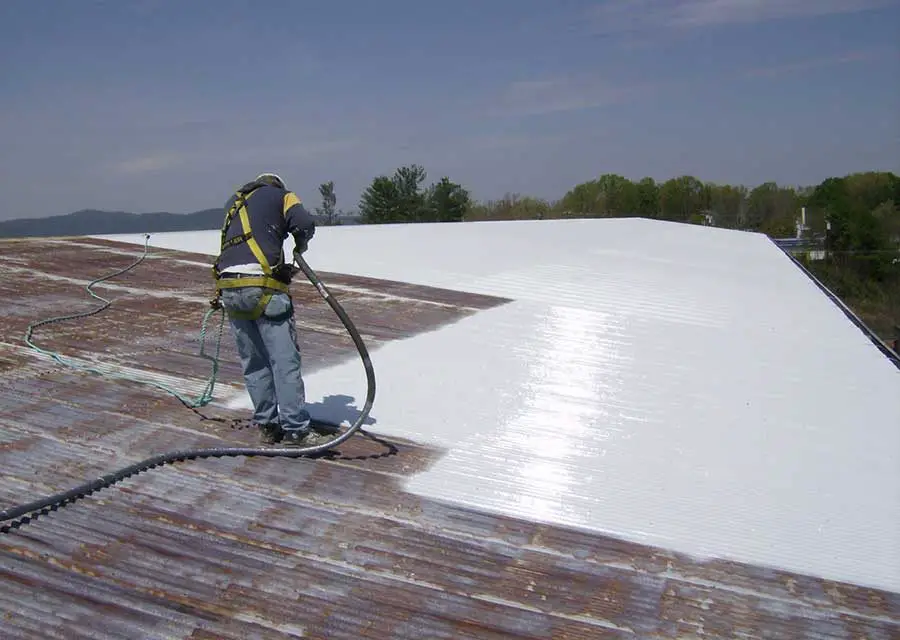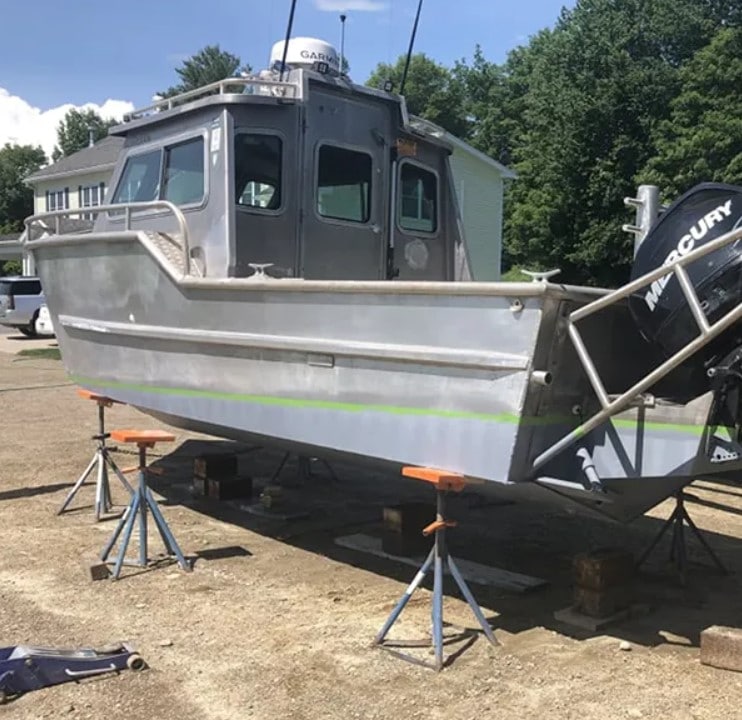What Does Elastomeric Coating Mean?
Elastomeric coating is a type of paint or coating that is made up of elastomers, which are elastic polymers. This type of coating is often used on concrete and metal surfaces in order to provide a durable, weather-resistant finish. Elastomeric coatings are also often used in industrial and commercial applications where a high level of resistance to abrasion, chemicals, or other damaging elements is required.
Elastomeric coatings typically have a higher solids content than traditional paints or coatings, meaning that they are thicker and more resistant to wear and tear. They are also generally more expensive than traditional paints or coatings. However, their durability and resistance to damage make them an ideal choice for many applications.

Elastomeric coatings are available in a variety of colors and finishes, making them a versatile option for both residential and commercial applications. They can also be applied to a variety of surfaces, including concrete, metal, wood, and plastic. Elastomeric coatings can be applied using a brush, roller, or sprayer.
When selecting an elastomeric coating for your project, it is important to consider the specific needs of your surface and application. For example, if you are looking for a durable finish that can withstand heavy traffic or exposure to weathering, an elastomeric coating with a high solids content may be a good choice. If you need a more flexible finish that can conform to irregular surfaces, a lower solids content coating may be a better option.
Acrylic Elastomeric Coatings
Acrylic elastomeric coatings are a type of elastomeric coating that is made from an acrylic resin. This type of coating is often used on concrete and metal surfaces in order to provide a durable, weather-resistant finish. Acrylic elastomeric coatings are also often used in industrial and commercial applications where a high level of resistance to abrasion, chemicals, or other damaging elements is required.
Acrylic elastomeric coatings typically have a higher solids content than traditional paints or coatings, meaning that they are thicker and more resistant to wear and tear. They are also generally more expensive than traditional paints or coatings. However, their durability and resistance to damage make them an ideal choice for many applications.

Acrylic elastomeric coatings are available in a variety of colors and finishes, making them a versatile option for both residential and commercial applications. They can also be applied to a variety of surfaces, including concrete, metal, wood, and plastic. Acrylic elastomeric coatings can be applied using a brush, roller, or sprayer.
When selecting an acrylic elastomeric coating for your project, it is important to consider the specific needs of your surface and application. For example, if you are looking for a durable finish that can withstand heavy traffic or exposure to weathering, an acrylic elastomeric coating with a high solids content may be a good choice. If you need a more flexible finish that can conform to irregular surfaces, a lower solids content coating may be a better option.
Polyurethane Elastomeric Coatings
Polyurethane elastomeric coatings are a type of elastomeric coating that is made from polyurethane resin. This type of coating is often used on concrete and metal surfaces in order to provide a durable, weather-resistant finish. Polyurethane elastomeric coatings are also often used in industrial and commercial applications where a high level of resistance to abrasion, chemicals, or other damaging elements is required.
Polyurethane elastomeric coatings typically have a higher solids content than traditional paints or coatings, meaning that they are thicker and more resistant to wear and tear. They are also generally more expensive than traditional paints or coatings. However, their durability and resistance to damage make them an ideal choice for many applications.

Polyurethane elastomeric coatings are available in a variety of colors and finishes, making them a versatile option for both residential and commercial applications. They can also be applied to a variety of surfaces, including concrete, metal, wood, and plastic. Polyurethane elastomeric coatings can be applied using a brush, roller, or sprayer.
When selecting a polyurethane elastomeric coating for your project, it is important to consider the specific needs of your surface and application. For example, if you are looking for a durable finish that can withstand heavy traffic or exposure to weathering, a polyurethane elastomeric coating with a high sol ids content may be a good choice. If you need a more flexible finish that can conform to irregular surfaces, a lower solids content coating may be a better option.
Silicone Elastomeric Coatings
Silicone elastomeric coatings are a type of elastomeric coating that is made from silicone resin. This type of coating is often used on concrete and metal surfaces in order to provide a durable, weather-resistant finish. Silicone elastomeric coatings are also often used in industrial and commercial applications where a high level of resistance to abrasion, chemicals, or other damaging elements is required.
Silicone elastomeric coatings typically have a higher solids content than traditional paints or coatings, meaning that they are thicker and more resistant to wear and tear. They are also generally more expensive than traditional paints or coatings. However, their durability and resistance to damage make them an ideal choice for many applications.

Silicone elastomeric coatings are available in a variety of colors and finishes, making them a versatile option for both residential and commercial applications. They can also be applied to a variety of surfaces, including concrete, metal, wood, and plastic. Silicone elastomeric coatings can be applied using a brush, roller, or sprayer.
When selecting a silicone elastomeric coating for your project, it is important to consider the specific needs of your surface and application. For example, if you are looking for a durable finish that can withstand heavy traffic or exposure to weathering, a silicone elastomeric coating with a high solids content may be a good choice. If you need a more flexible finish that can conform to irregular surfaces, a lower solids content coating may be a better option.
Urethane Elastomeric Coatings
Urethane elastomeric coatings are a type of elastomeric coating that is made from urethane resin. This type of coating is often used on concrete and metal surfaces in order to provide a durable, weather-resistant finish. Urethane elastomeric coatings are also often used in industrial and commercial applications where a high level of resistance to abrasion, chemicals, or other damaging elements is required.
Urethane elastomeric coatings typically have a higher solids content than traditional paints or coatings, meaning that they are thicker and more resistant to wear and tear. They are also generally more expensive than traditional paints or coatings. However, their durability and resistance to damage make them an ideal choice for many applications.
Disadvantages of elastomeric paint
While elastomeric paint offers many advantages, there are a few disadvantages to consider as well. One of the main disadvantages of elastomeric paint is its cost. Elastomeric paint is typically more expensive than traditional paint, due to its higher solids content and durability. In addition, elastomeric paint can be difficult to apply evenly, especially on larger surfaces. It is also important to note that elastomeric paint does not always adhere well to certain types of surfaces, such as plastic or glass. If you are considering using elastomeric paint on a surface that may be difficult to coat evenly, it is important to consult with a professional painter or contractor beforehand.
Another disadvantage of elastomeric paint is its lifespan. While elastomeric paint can last for many years, it will eventually need to be replaced. This can be a disadvantage if you are looking for a long-term solution for your surface.
Overall, elastomeric paint is a great choice for surfaces that require a durable, weather-resistant finish. However, it is important to keep in mind the disadvantages of elastomeric paint before making a decision. If you have any questions about whether or not elastomeric paint is right for your project, it is always best to consult with a professional painter or contractor.
FAQ
How long does elastomeric paint last?
Elastomeric paint can last for many years, but it will eventually need to be replaced.
What is the difference between acrylic and elastomeric?
Elastomeric paint is made from a type of synthetic rubber, while acrylic paint is made from a type of plastic. Elastomeric paint is typically more expensive than acrylic paint, but it is also more durable.
What is elastomeric roof coating used for?
Elastomeric roof coatings are used to provide a durable, weather-resistant finish on roofs. They are often used in commercial and industrial applications where a high level of resistance to abrasion, chemicals, or other damaging elements is required.
What is the difference between elastomeric and silicone?
Elastomeric paint is made from a type of synthetic rubber, while silicone paint is made from a type of plastic. Elastomeric paint is typically more expensive than silicone paint, but it is also more durable.
Which roof coating is best?
There is no one “best” roof coating. The best roof coating for your project will depend on the specific needs of your project.
Does elastomeric roof coating need a primer?
Elastomeric roof coatings typically do not require a primer. However, it is always best to consult with a professional before beginning your project.
How much does elastomeric roof coating cost?
Elastomeric roof coatings can vary in price depending on the specific product and brand. However, they are typically more expensive than traditional paints or coatings.
Can you use elastomeric paint on wood?
Elastomeric paint can be used on wood, but it is important to consult with a professional beforehand. Elastomeric paint does not always adhere well to certain types of surfaces, such as plastic or glass.
Overall
Elastomeric paint is a type of paint that is made from synthetic rubber. It is more expensive than traditional paint, but it is also more durable. Elastomeric paint can be difficult to apply evenly, especially on larger surfaces. It is also important to note that elastomeric paint does not always adhere well to certain types of surfaces, such as plastic or glass. However, elastomeric paint is a great choice for surfaces that require a durable, weather-resistant finish.




Thank you for this very helpful article about elastomeric coating protection. I really appreciated this idea.